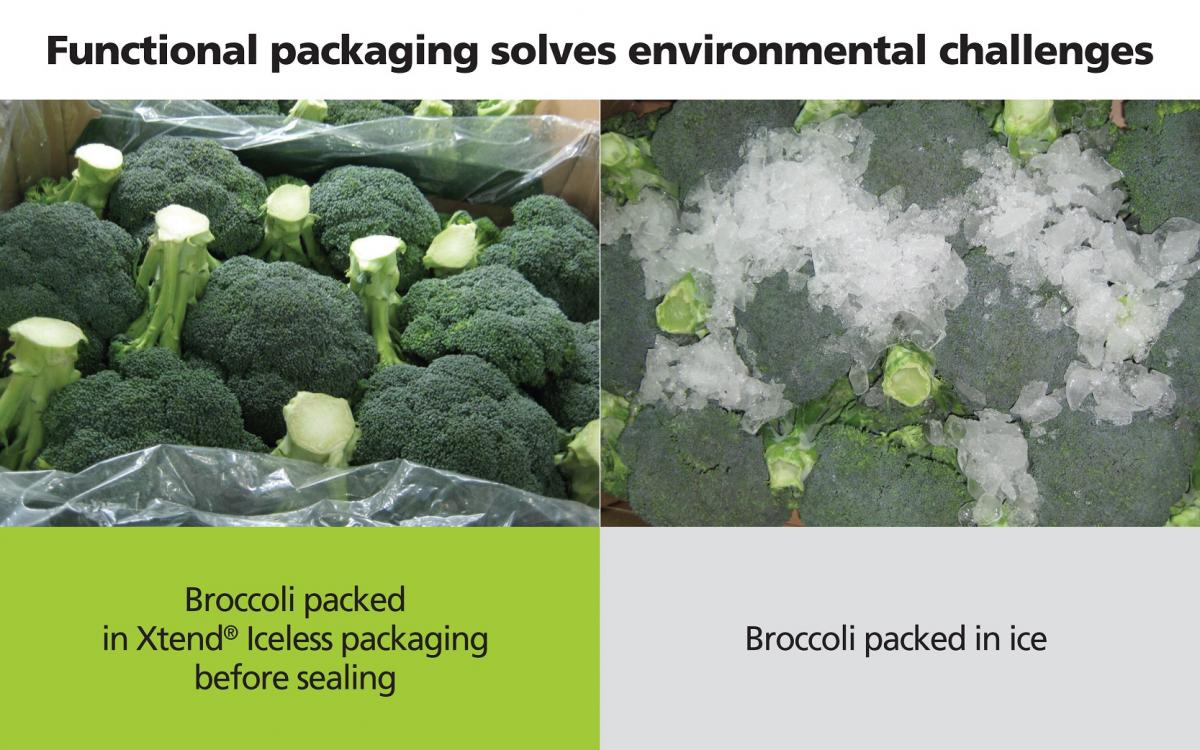StePac L.A. Ltd. says its innovative MA/MH (Modified Atmosphere/Modified Humidity Packaging) technology is changing the paradigm of cold-chain supply and integrating sustainability into the long-haul transport of fresh broccoli and other vegetables traditionally shipped in ice. The technology effectively eliminates the need for ice and nonrecyclable wax cartons while enhancing food safety.
Functional packaging solves environmental challenges
According to the company, stakeholders along the supply channel see the multiple benefits of Xtend® Iceless MA/MH bulk packaging for maintaining the freshness of broccoli in transit. Among the benefits are positive environmental impact through driving substantial reductions in carbon emissions and food waste.
An added advantage is that of considerable cost savings in packaging (up to 40%) and transport expenses.

In countries such as the US, broccoli and other produce items are typically packed in waxed cartons filled with ice to keep the produce cool and maintain freshness during storage and shipment. However, when the ice melts onto the produce it not only creates a mess but encourages growth of both plant and human pathogens. Waxed cartons also are non-recyclable. This generates untenable disposal problems for supermarkets, many of which are seeking greener alternatives in the wake of new laws imposed to tackle this problem.
Recycling, eliminating waste and carbon emissions
“Xtend Iceless offers a dry — and much leaner and greener — means of transporting fresh produce, wholly eliminating the need for ice,” says Gary Ward, Ph.D., Business Development Manager for StePac. “Moreover, it makes waxed cartons totally unnecessary. Xtend Iceless MA/MH packaging is fully recyclable and offers an affordable solution suitable for land or sea freight. The packaging is ‘climate positive’, generating a net savings in carbon emissions as a result of significantly extending the shelf life of fresh produce and reducing supply chain waste. It’s a ‘win-win’ for all.”
“An alarming 40% to 50% of food is lost post-harvest due largely to spoilage in transit,” adds Ward. According to the Food & Agriculture Organization, an astronomical 1.3 billion tons of food worldwide is wasted annually, a vast majority of which perishes before ever reaching the consumer.
Integration into Field Packing
One of the biggest challenges the company faced when developing the product was how to integrate modified atmosphere packaging into a field-packed process. Much of the broccoli in the US is field-packed in cartons, palletized, and then ice is added upon arrival at the packing house. Field-packing represents an obstacle for implementation of MA/MH technology. “We developed a solution that enables the broccoli to be field-packed in Xtend packaging and then forced air and/or vacuum cooled in the sealed packaging. This seamlessly integrates the packaging into the existing packing process,” explains Ward, noting that the system is patented in the US and Mexico.
Research demonstrates lower bacteria counts
Research has demonstrated the ability of Xtend Iceless packaging to significantly slow down the growth of microorganisms on broccoli, effectively abating produce deterioration and — more importantly — reducing the risk of foodborne illness associated with human pathogens such as E. coli.
In a study carried out at the Agricultural Research Organization in Israel, Xtend Iceless packaging was shown to be a superior alternative to ice for preserving all around quality, as well as for mitigating bacterial growth on produce during prolonged storage.
The shift to iceless packaging
The shift to iceless packaging is already gaining momentum among distributers of fresh produce globally. In the US, where broccoli is transported by land on trucks bearing weight constraints, road traffic accounts for 50% of air pollution. Transport of broccoli from Salinas, California, to New York City in Xtend Iceless packaging allows 33% more broccoli to be packed in the same container space, yet results in a 30% reduction in gross weight. This translates into 40% lower logistical costs as well as a reduction in carbon footprint.
Nike Paul George PG3














